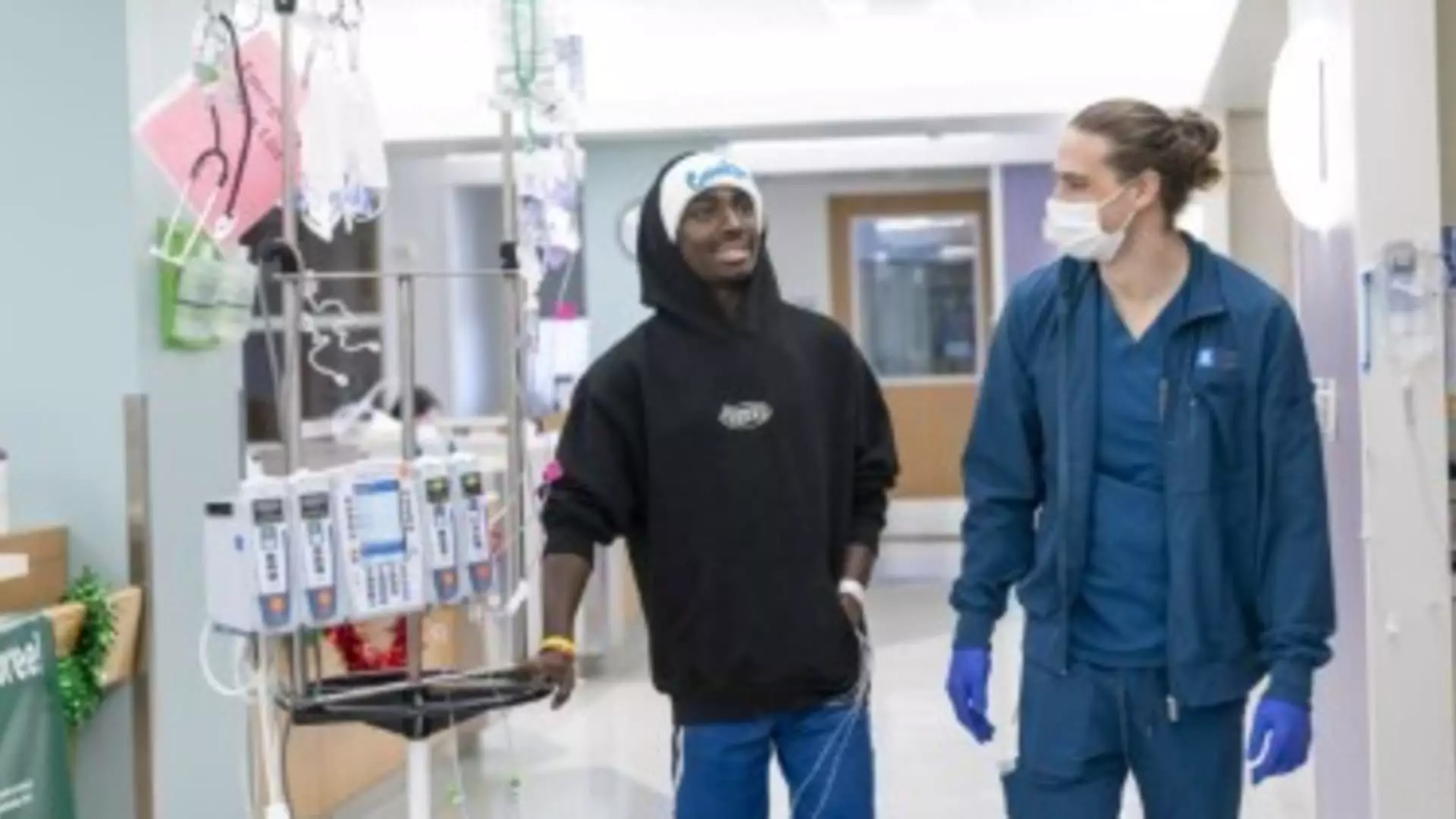Sickle cell disease, a hereditary blood disorder marked by sickle-shaped red blood cells, inflicts immense suffering on those affected. For many, like 19-year-old Deshawn “DJ” Chow, the journey to a normal life remains marred by debilitating pain and frequent hospitalizations. As gene therapies emerge as a beacon of hope, the complexities surrounding their accessibility and affordability raise pressing questions about the future of treatment for this chronic illness.
Since early adolescence, DJ Chow has battled the relentless pain associated with sickle cell disease. His narrative is a common one among adolescents with the disorder, characterized by absences from school and the debilitating cycle of emergency room visits. “It’s just been hard skipping school and always being in and out of the hospital,” Chow reflects on his experiences. Such testimonies reveal the broader impact of the disease, particularly on the lives of young individuals, where the anticipation of treatment competes with the harsh reality of day-to-day suffering.
To aid DJ’s struggle, his adoptive parents sought new treatments after recent FDA approvals of gene therapies targeting sickle cell disease. Their decision to access care at the City of Hope Children’s Cancer Center in Los Angeles underscores the vital role healthcare facilities play in bridging gaps between groundbreaking therapies and vulnerable patients seeking hope.
In the past year, therapies like Casgevy, developed by Vertex Pharmaceuticals, have offered a potential game-changer in treating sickle cell. However, with a price tag exceeding $2 million per patient, the treatment comes with its own set of challenges. Interviews with patients and caregivers reveal a disheartening reality: while these therapies promise improved health, their exorbitant costs may hinder wider access.
Chow is among a select group of patients who have completed treatment. After finishing his course of Casgevy, he allows himself to dream—dreams of learning to snowboard, surf, and engage in activities that previously felt like impossible luxuries. The stories of those like DJ, who emerge from the dark cloud of their illness, should spark conversations about equitable access to such transformative treatments, particularly given that around 100,000 Americans live with sickle cell disease, a condition that disproportionately affects the Black community.
Despite the exciting developments in gene therapy, the rollout remains painfully slow. In the first year following the FDA’s approvals, only about 100 patients managed to receive therapy—far from the number who could potentially benefit. Industry leaders from Vertex and competitors like Bluebird Bio recognize the challenges that lie in scaling these treatments to meet demand.
A critical concern is the coordination between healthcare providers and insurers to ensure comprehensive coverage for these advanced therapies. Jennifer Cameron, executive director of patient access at Children’s National Hospital, highlights the learning curve present in the early stages of this initiative. “It is much smoother today than it was when we first started getting patients in,” she notes, yet the road ahead remains fraught with uncertainty due to the high costs associated with these therapies.
Healthcare leaders like Dr. Leo Wang at City of Hope echo these sentiments, stating the expensive nature of treatments can be daunting for many employer-based insurance plans. The industry’s response will need to evolve, potentially necessitating new payment models to distribute financial responsibility differently. According to David Joyner, CEO of CVS Health, “You have to think about a different payment model, because today’s payment model is not constructed to spread the cost.” This acknowledgment is a step towards addressing the broader systemic issues that patients like Chow face.
The financial implications are not limited to private insurance. Many patients rely on state Medicaid programs, which serve as the safety net for the most vulnerable populations. Given that many sickle cell patients fall under these programs, ensuring their access to potentially life-saving therapies is critical. The Biden administration’s development of a Cell and Gene Therapy payment model highlights a robust governmental effort to address these challenges through an outcomes-based funding approach. This new model could significantly ease the financial burden on states while expanding access to innovative health solutions.
Yet, the road is rocky—a recent study estimated that without significant intervention, states with high concentrations of sickle cell patients could face budget impacts of $30 million or more. As healthcare discussions continue in political arenas, the necessity for comprehensive strategies to fund high-cost treatments like gene therapy cannot be overstated.
The journey for families impacted by sickle cell disease, such as the Chows, serves as a poignant reminder of the need for equitable healthcare access. DJ’s father, Sean Chow, articulates the heartbreak of seeing his son suffer, emphasizing a desire for other families to access breakthrough gene therapies. The emotion behind such statements reflects the human cost of bureaucratic and financial barriers.
As promising gene therapies emerge for sickle cell disease, the healthcare system faces a crucial moment of introspection and reform. The challenges of high pricing, complex insurance coverage, and potential state-level financial strains necessitate coordinated efforts among pharmaceutical companies, healthcare providers, insurers, and policymakers. The hope that patients like DJ hold should compel all stakeholders to advocate for innovative solutions, ensuring that advancements in medical science translate into accessible, life-changing treatments for everyone in need.

